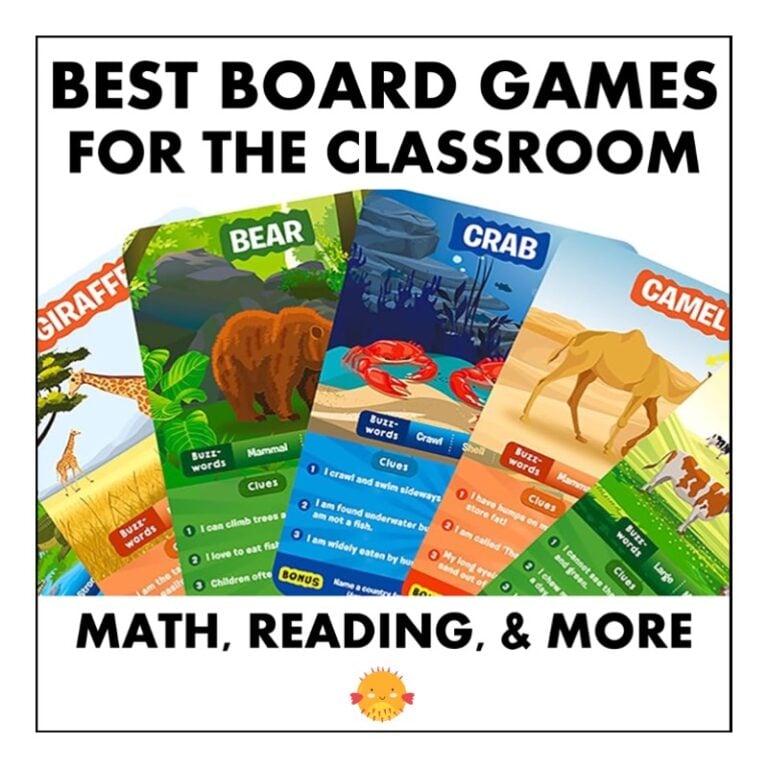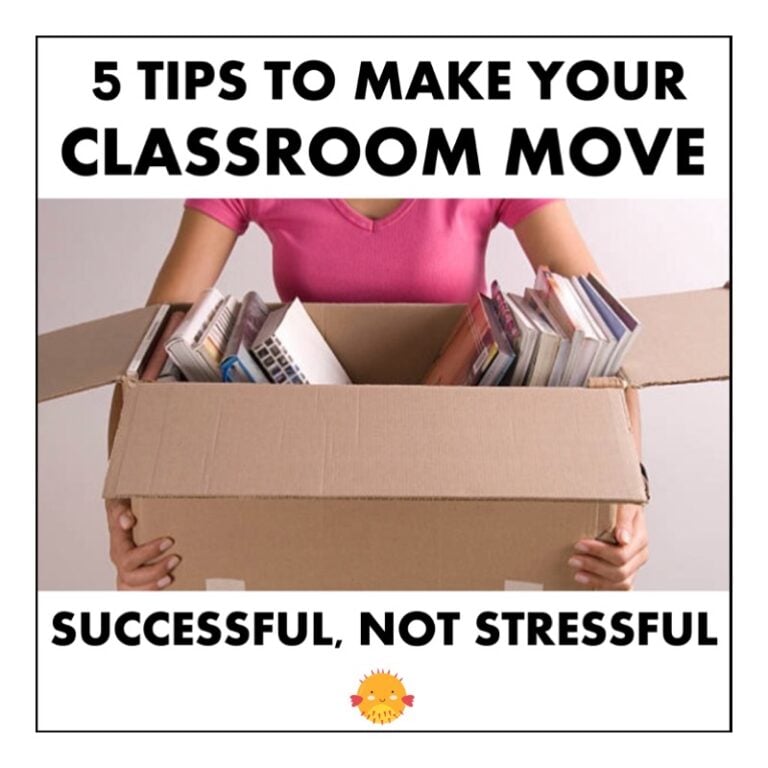
16 Quick Easy One Minute Brain Breaks to Keep Kids Learning
Sometimes I feel bad about how much time our students spend sitting at their desks working. They’re just kids, after all, with short attention spans and a high energy level.
Giving students short breaks at regular intervals isn’t just a good idea, it’s essential to their well-being. There are a variety of ways you can do this. This blog post will give you a great list of easy one minute brain breaks.

But, before we dive in, let’s look at exactly what brain breaks are and why they should be part of the academic environment:
.
What are brain breaks?
Educational brain breaks are a simple technique designed to give students brief periods of physical activity during the school day. These activity breaks can incorporate movement into your lesson plans or be completely separate from anything academic.
The purpose of a brain break is to give students’ brains a mental reprieve from whatever task they have been engaged in for an extended period of time. It also gives the body a break from sitting (because being sedentary is not a healthy habit).
.
What are the benefits of brain breaks?
Brain break activities are a great way to refocus students’ attention and improve on task behavior. This isn’t just speculation or even observation on my part. It’s been demonstrated through many different scientific studies.
According to researcher Youki Terada, the benefits of brain breaks when integrated into the academic setting include:
- an increase in productivity
- improved attention
- better mood
- boosted brain function
- improved ability to learn new social skills
.
In 2012, one of the most important studies on brain breaks used MRIs to look at the neural activity of children during downtime. Researchers found that during this state of mental rest, the brain is still highly active and engaged in tasks like organizing memories and planning.
Years of research have consistently shown that physically active children academically outperform their inactive peers in both the short- and long-term. That’s because physical activities increase blood flow and oxygenation in the brain and stimulate nerve cell growth
In a 2015 study, three types of brain breaks were implemented and studied in a third-grade classroom. The researcher (Westlake) discovered that content-related brain breaks with a moderate level of activity proved to be the most beneficial. Student engagement and time needed to refocus were optimal after this specific kind of brain break. Refocus time was as little as 30 seconds. (But it took as long as 3 minutes for students to refocus following brain breaks with a high activity level.)
All of this demonstrates that short periods of physical activity, between or during academic tasks, are healthy for children, allow them to perform better academically, and improve classroom behavior.
.
How often do students need a brain break?
How frequently you should give brain breaks varies by age group and their attention span. Older kids can work for longer periods of time than younger ones. The key is to give your students a break before they become frustrated with their work or totally lose focus.
In lower elementary grades, you might give short one minute brain breaks after every 15 minutes of work time. In intermediate grades, you can stretch it to 25 or 30 minutes. It might seem like a lot at first, but taking frequent one minute brain breaks increases productivity – so much so that the quantity and quality of your students’ work will be higher than if they just worked the entire time.
.
Easy One Minute Brain Breaks for the Classroom
Now that you know how important short brain breaks are and when to give them, here are some quick activities that you can start using today. All of these can be done in about one minute – or you can extend them into a longer break if your students need it.
- Simon Says
- Stretch and Pose
- Freeze Dance
- Ear-Nose Point & Switch
- Mindful Meditations
- Criss Cross March
- Beach Ball Pass
- Animal Crossing
- Silent Scavenger Hunt
- Four Corners
- Classmate Swip Swap
- Hot Potato
- Going on a Bear Hunt
- Sky Writers
- Shake It Up
- Keep the Beat
.
Let’s take a closer look at each of these:
Simon Says
Everyone knows this fun game, so I don’t think it needs much explanation. Whatever Simon says, the students must do. For example, “Simon says put your elbow on your knee.” Whoever does an action that Simon didn’t say (such as just, “Touch your ear.”), has to sit down.
Stretch and Pose
Do you know any yoga moves? If not, that’s ok. You can find some great yoga videos for kids on youtube. I like this gentle introduction for children – Yoga for Kids! The entire video is 25 minutes long, so you’ll want to preview it and find a good segment your students can do during their brain break time.

.
Freeze Dance
This is a fun movement break that the kids really love and it is very simple to do. Just pop on one of their favorite kid tunes. (I Heart Radio Family provides free, kid-safe streaming music) Let them wiggle and dance for a moment and then stop the music. When it stops, they must freeze. Restart the music and do it again.
I suggest choosing an upbeat but not too fast song for this activity. You don’t want them to work up a sweat and get completely wound up. Remember, these are fast one minute brain breaks, not a workout.
Ear to Nose Point and Switch
This quick brain break is a fun way to reset tired minds. Instruct your students to touch their left ear with their right hand and, at the same time, touch their nose with their left hand. Then have them switch their hands and touch their right ear with their left hand and their nose with their right hand. Do the switch several times. This activity involves cross-body coordination that really engages the brain.
Mindful Meditations
This is a great way to help students relax, clear their minds, and reduce stress. It’s also the calmest of these one minute brain breaks. Have students sit in a comfortable position on the floor. Tell them to close their eyes and imagine being on a boat. Picture the waves, sway your body back and forth with the waves, imagine the smell of the water and the warmth of the sunshine. Take a deep breath in and slowly exhale.
The Criss Cross March
This is another activity that involves different movements and cross-body coordination (also known as crossing the midline). Instruct your students to touch their right elbow to their left knee. Then switch and touch the left elbow to the right knee. Keep switching back and forth at a steady pace. Make sure they are doing this with high knees as if marching. Stop and do the same activity with hands touching the opposite feet. This gets in a good stretch too! If you want, you can find a good marching song to play while your students do the Criss Cross March.
Beach Ball Pass
This is one of my class’ favorite one minute brain breaks. Have students sit on the floor in a large circle. Using a large, soft ball (a beach ball is perfect), toss the ball lightly in the air and tap it with your hands to send it to someone else. The aim of the game is to keep the ball in the air for an entire minute without letting it leave the circle. This requires some self-control. If someone hits the ball too far, it will certainly fly out of the circle and the game will be over.
Wild Animal Crossing
Have your students form two lines, one on each side of the room, facing each other, so that each student has a partner. Tell them to silently think of an animal. When you say “go”, one line of students silently acts out their various animals as they move across the room towards their partners. When they meet up, the partner guesses the animal. Send the students back to their spots and give the other line a turn.
Silent Scavenger Hunt
This is a fun activity that students of all ages enjoy. While the class is working on whatever academic task you’ve assigned, write a short phrase on a piece of paper and secretly place it somewhere in the room. (Don’t hide it too well or they’ll never find it.) When it’s time for a brain break, send them to find the hidden paper. The trick is that they have to do it in silence or the game ends.
A variation for older students is to write each word of your phrase on separate pieces of paper (colored sticky notes work well). Tell the class how many words they need to find. When they’ve all been found, the students must arrange them to spell out your phrase. You can also do this with individual letters that spell out a secret word.
Four Corners
You are probably familiar with this popular classroom game but it can be adapted to be one of your one minute brain breaks.
Number each corner of the room 1 – 2 – 3 – 4. Have the class split up and go to whatever corner they like. Call out a number and whoever is in that corner must sit down. Keep playing until time is up.
Another way to play is to use multiple-choice questions instead of having students randomly choose a corner. They can be fun ones or academic questions. Whoever goes to the corner for the correct answer, stays in the game.
Classmate Swip Swap
To begin this game, start with everyone sitting at their desks. Call out a characteristic such as red shirt or curly hair or brought a lunch box to school. Anyone with that characteristic must swap spots with another student. The ones who do not have whatever you called out stay in their seats. Have them keep trading places for a total of 10 swip swaps. Did anyone end up back at their own desk?
Hot Potato (Pass the Potato)
This is classic game, but one of the most fun brain breaks. Kids just seem to love it!
Have the class sit on the floor in a large circle. Give one person a small object to hold. This is the “hot potato”. It can be anything – a marker, white board eraser, bean bag, etc. Turn on some music and tell the students to start passing the potato in a clockwise direction around the circle. When the music stops, whoever is left holding the “hot potato” is out of the game.
Sky Writers
This quick game is great for your 1 minute brain breaks. Partner your students up and have them stand next to each other shoulder-to-shoulder. The first partner uses their index finger to write something in the air. The other partner must guess the word. Now switch and let the other student have a turn. For little ones, they can just write a letter of the alphabet or a number instead of an entire word.
We’re Going on a Bear Hunt

Do you know the chant or have you read the book We’re Going on a Bear Hunt? I think it’s one of the best brain breaks for younger kids involving music and movement.
.
Here’s a video of Dr. Jean’s Going On A Bear Hunt that you can pop on for students to follow along with:
.
.
Shake It Up
Have students stand up at their desks. Tell them to shake out their hands, arms, feet, legs, and then their whole body, letting go of any tension. Finish up by raising their arms and stretching to the sky while taking a big breath. Then blow it out slowly while lowering their arms. This is one of my favorite brain breaks to use during state testing because it’s quiet and students can do it at their desks during our very short break. It really helps to relax and refocus them.
Keep The Beat
Last on this list of quick one minute brain breaks is a fun rhythm game. Ask everyone to stand up and listen as you clap out a beat. Then have them clap it back, repeating your pattern exactly. Do it several more times gradually increasing the speed or complexity of your beat.
For more activities that can be adapted and used for quick brain breaks with your students, try searching online for movement songs, stretching exercises for kids, easy yoga moves, and mindfulness exercises for children. Even short clips on youtube teaching students how to use sign language are a good way to get their brains working in a new way.
I hope this list has given you some new ideas to try out with your class. By integrating different types of brain breaks into your daily routine, I think you will find that your students are happier, more focused, and ready to learn. And all of that will improve classroom behavior and make for a happier teacher too!
.

Did you know that quick movement breaks can also help students during homework time too?
⏬ Visit the Resource Library to download this free printable letter with a list of brain break ideas that you can send home to parents!



